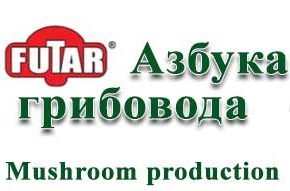Oyster mushroom strain description
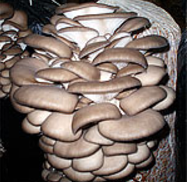 Mushroom growers, especially beginners, are concerned with the question: which oyster mushroom strains are the best for commercial growing? What are the criteria for their choice? Do the microclimate conditions affect the mushroom yield? We bring to your attention a description of oyster mushroom strains, their characteristics and photos:
Mushroom growers, especially beginners, are concerned with the question: which oyster mushroom strains are the best for commercial growing? What are the criteria for their choice? Do the microclimate conditions affect the mushroom yield? We bring to your attention a description of oyster mushroom strains, their characteristics and photos:
The “Futar” Company produces a grain mycelium of common oyster mushrooms of the following strains:
R-10 (analogue of DB-2007),
R-12 (analogue of K-12),
R-15 (analogue of HK-35),
R-17 (analogue of K-17),
R-80 ( analogue of P-80).
In the production conditions of a large mushroom complex (substrate treatment – tunnel pasteurization) and in small enterprises ( hydrothermal treatment), we tested various oyster strains. For the production of mycelium, we selected those that best meet the following three criteria:
- Cultivation intensity.
Creating and maintaining the right microclimate parameters is quite expensive, so the intensification of production is of great importance. Strains offered by Futar are able to quickly process the nutrients of the substrate, forming a crop in a short time, yielding as much as possible at the first and second flushes. A distinctive feature of our mycelium is also its overall activity and rapid colonization of the substrate.
This helps to reduce the number of days for incubation and the simultaneous flushes formation. The production cycle of oyster mushroom growing in two flushes lasts about 50-56 days.
Seasonality is also taken into account when selecting strains:
Conventionally, oyster can be divided into three large groups: summer, winter and universal strains.
The universal strains are R-15, R-17, R-80 . Optimum growth temperature for them is +14-16ºC. But they can generally grow in a wide range of temperatures, from +10 to +25ºC.
Here are the characteristics of these strains:
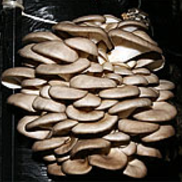 R-80 less demanding in terms of growing conditions and forgiving minor deviations from the specified microclimate parameters.
R-80 less demanding in terms of growing conditions and forgiving minor deviations from the specified microclimate parameters.
It is necessary to pay attention to the fact that the R-80 has one distinctive feature. If the raw materials (husk or straw) have been treated with fungicides, then, regardless of the way the substrate is treated ( hydrothermal, xerothermal treatment, tunnel pasteurization), the blocks appear with the spots of non-growth. Such spots can become blocked or trichoderma develops there .
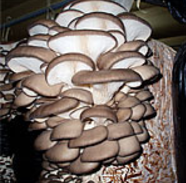 R-17 is demanding of incubation conditions. In the case of a sharp temperature change in the incubator, water appears between the film and the substrate, which prevents the block from developing normally. If in your incubator there are blocks of various age, you must carefully observe the temperature regime, avoiding swings and in no case take outdoor air to cool the blocks in the heating phase.
R-17 is demanding of incubation conditions. In the case of a sharp temperature change in the incubator, water appears between the film and the substrate, which prevents the block from developing normally. If in your incubator there are blocks of various age, you must carefully observe the temperature regime, avoiding swings and in no case take outdoor air to cool the blocks in the heating phase.
Oyster mushroom strain R-10 can grow at low temperatures, but we recommend growing it in spring and autumn, as it is very demanding for fresh air.
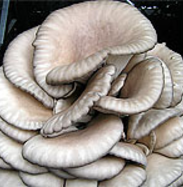 R-12 is a strain that many consider being winter one, but it is not quite so: it better than others withstands the effects of low temperatures, and is resistant to a slight temperature fluctuation (3-5 degrees) during cultivation. For example, in the case of a sharp cooling of the outside air, the automation or the operator needs some time to reconfigure the microclimate systems, adapting them to new conditions. During the adjustment, the temperature in the chamber may fall, but then return to the previous parameters. However this will not affect the growth of mushrooms and you will avoid yield losses.
R-12 is a strain that many consider being winter one, but it is not quite so: it better than others withstands the effects of low temperatures, and is resistant to a slight temperature fluctuation (3-5 degrees) during cultivation. For example, in the case of a sharp cooling of the outside air, the automation or the operator needs some time to reconfigure the microclimate systems, adapting them to new conditions. During the adjustment, the temperature in the chamber may fall, but then return to the previous parameters. However this will not affect the growth of mushrooms and you will avoid yield losses.
The optimum at which it grows best is + 13-15ºC. In the case of a sharp cooling, it normally develops even at a temperature of 12°C.
- Productivity.
The most productive strains are R-17 and R-12, as their stipe adds weight to the overall yield, and it forms without stretching, smoothly turning into a cap.
But at the same time they are the most demanding in terms of microclimate conditions. Technologists of our company have developed technological flowsheets (checklists) for growing oyster mushrooms of each strain. You can download them here.
With all the recommendations for incubation and production of mushrooms, the yield at the first flush is at least 18-23% of the block weight. After all, the strains we produce have a very high potential for fruit body formation, realizing it fully during the first and second flushes.
- Fruit bodies characteristics of different strains.
- Mushroom clusters often reach a weight of 1.5-2 kg.
- Have a slight sporulation. R-80 has moderate sporulation.
- Resistant to bacteriosis.
- Mushrooms have beautiful fruit bodies. They are fleshy, with a large cap and a small edible stipe.
- Strain color of R-10, R-12, R-15, R-17 is gray, with gradation from dark gray at low growth temperatures, to almost white at high temperatures.
R-80 is gray-brown. Can be cream-colored or dark brown, which also depends on the temperature regime during cultivation.
- Pulp of the stipe and caps is tender without veins or fibers, so it is quickly cooked during roasting, boiling or marinating. At the same time, the mushrooms are elastic, the cap does not crack or crumble when packed or transported in boxes.
- Mushrooms 5-7 cm in diameter, picked at the technical maturity stage (before the start of sporulation) can be stored for 5-6 days in a refrigerator at temperatures from 0 +5ºC, while having attractive marketable appearance.
You can find the detailed description of each strain as well as cultivation technological flowsheets, on our online stores, at the category of “Grain mycelium”.
